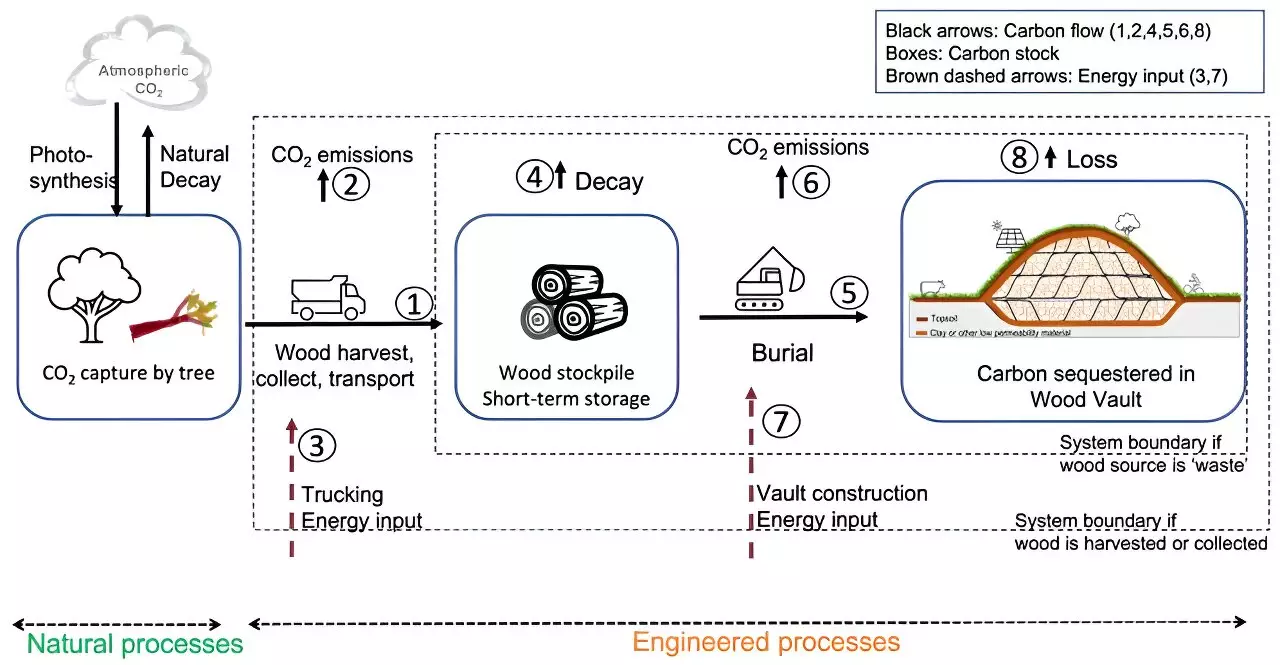As the effects of climate change become increasingly evident, the urgency to reduce atmospheric carbon levels grows paramount. The reliance on fossil fuels has led to a significant increase in greenhouse gas emissions, making it imperative to explore cost-effective methods for capturing and storing carbon. Recent findings from a collaborative study by researchers from the University of Maryland, in partnership with the Canadian Ministry of Agriculture, suggest that burying biomass might be a sustainable answer to this pressing problem.
Plants play a vital role in the global carbon cycle, absorbing carbon dioxide (CO2) during photosynthesis and subsequently releasing it upon decomposition. Historically, the fate of this carbon has favored its return to the atmosphere upon the death of these plants. However, the concept of sequestering carbon becomes interesting when considering what would happen if biomass, instead of decomposing, were buried. This study presents compelling evidence that such an approach could effectively trap carbon and mitigate its contribution to global warming.
The research team stumbled upon a log during excavation in Canada, which turned out to be a vital piece of evidence supporting their hypothesis. This log, estimated to be approximately 3,775 years old and remarkably preserved, offered insights into the longevity of carbon storage in naturally buried biomass. Analysis revealed that the log retained an impressive 95% of the carbon it had absorbed, demonstrating the potential efficacy of this method for long-term carbon sequestration.
Financial considerations are often integral to the viability of environmental solutions. In outlining the economic feasibility of the burial method, the researchers calculated costs ranging from $30 to $100 per ton for burying biomass. This starkly contrasts with alternative carbon capture methods, which can vary between $100 to $300 per ton. Thus, the implications of this study extend beyond environmental considerations to touch on crucial economic viability.
One of the most significant implications of this research lies in the sheer volume of carbon that could potentially be sequestered. The investigation suggests that adopting the practice of burying biomass could lead to the storage of an astonishing 10 gigatons of carbon annually. This not only highlights the potential of biomaterial in carbon management but also emphasizes the need for actionable strategies that communities, governments, and individuals can adopt on a global scale.
The study represents a groundbreaking step toward addressing climate change through innovative, cost-effective solutions. By understanding and harnessing nature’s mechanisms for carbon storage, researchers are paving the way for practical applications that can help mitigate climate change. Burying biomass not only provides a pathway for removing carbon from the atmosphere but also fosters a deeper appreciation for sustainable agricultural practices and resource management. As further research develops, incorporating such practices may prove invaluable in the fight against climate change.

